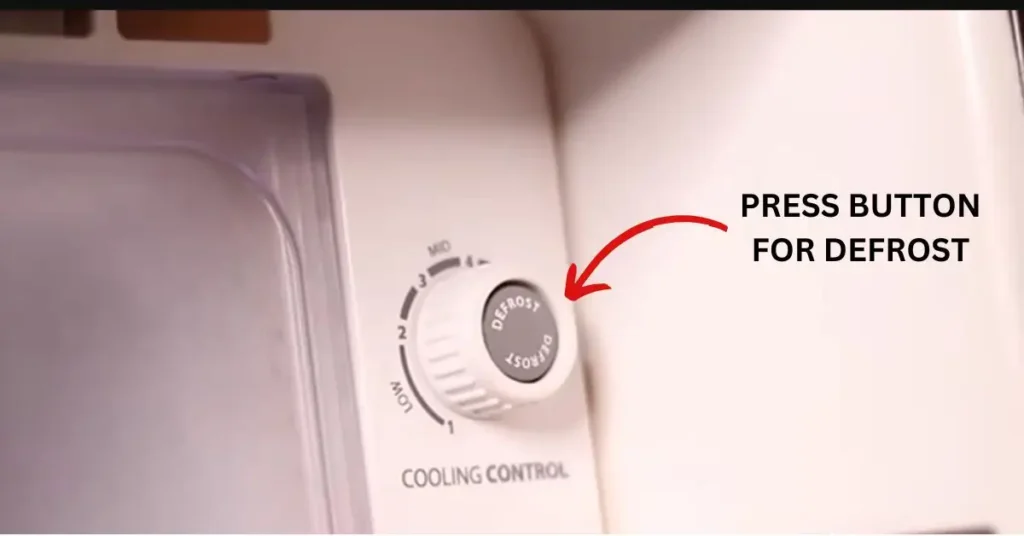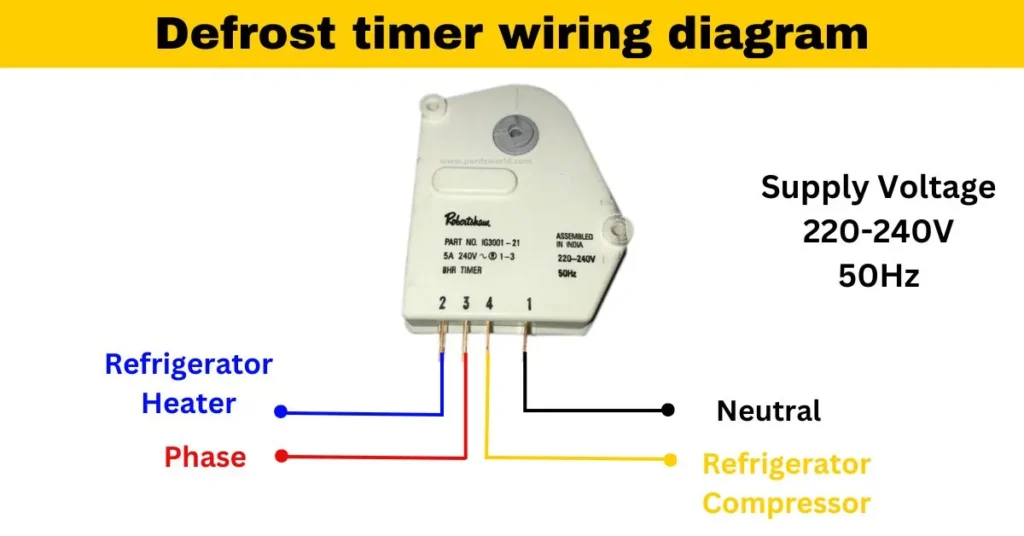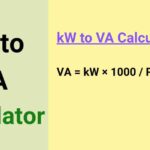Does your refrigerator frustrate you because it is defrosting too often and wasting energy? Many people don’t realize they can learn how to turn off defrost in refrigerator settings to control their fridge’s performance better and reduce energy costs.
By managing this setting, we can retain the taste in our food by keeping it fresh while ensuring cooling is efficient and effective.
We will discuss the steps required how to turn off defrost button in refrigerator some tips for great success in this process and how to manage the defrost features of a refrigerator effectively.
What is the Defrost Function in a Refrigerator?
Understanding the defrost function of a refrigerator’s thermostat is necessary to ensure that frost does not develop around the freezer compartment.
It is also common for frost to form on the platform when there is cold air in contact with humid air due to the formation of ice crystals.
This can lead to the development of more ice over time if it is not addressed which could affect the efficiency of your refrigerator and eventually lead to food spoilage.
Types of Defrost Systems:
#1. Manual Defrost:
With manual defrost refrigerators, you have to switch off the appliance and use the old method of waiting for the ice to melt which happens after some time.
This type of refrigerator is more efficient however, there always comes a time when they require some maintenance and checking.
#2. Automatic Defrost:
On the other hand, automatic defrosts activate the heating element at intervals whose purpose is to melt frost that develops within the freezer which then leaves the unit through drainage space.
#3. Frost-Free (No-Frost):
Frost-free models make use of fans to circulate air thereby minimizing moisture and avoiding the issue of ice building up in the first place.
Also Read: What is Star in Refrigerator
Why Would You Want to Turn Off the Defrost Feature?
While automatic defrosting can be a convenient feature, there are a few reasons why you might want to disable it temporarily:
#1. Save Energy:
Since water is the major resource affected, for example turning off the defrost function helps lower water potentially interfering with maintenance or deep cleaning tasks.
#2. Maintenance or Cleaning:
During maintenance or thorough cleaning, it is best to turn off the defrost function as this helps reduce the amount of water runoff that may impede your work.
#3. Prevent Over-Defrosting:
Indeed, some refrigerators do not operate the defrost cycle as frequently as it is needed and this becomes a cause of moisture and condensation problems.
This may also result in a somewhat wet interior of the fridge which can lead to mold issues.
Also Read: How to Choose Stabilizer for Refrigerator
How to Turn Off Defrost in Refrigerator: Step-by-Step Guide
We can also explain how to use the defrost button in a refrigerator. Here are the following steps:

Step 1: Identify Your Refrigerator Type
Whenever you want to disengage the defrost setting, it is important to know which type of refrigerator you have as this will affect how you carry out the process.
Is it a manual, automatic, or frost-free model, you will find the answer to these questions in the user’s manual.
Step 2: Locate the Defrost Control Switch or Timer
Usually, refrigerators with an automatic defrost feature have a timer/switch that controls the defrost cycle.
This is found around the temperature control panel most often or at the back side of the fridge. Let’s see how to locate it:
- Manual Defrost: In most cases, a manual-defrost refrigerator does not have an automatic defrost button. There is no need to worry here since the fridge will not be in a defrost cycle when you just turn it off.
- Automatic Defrost: Check alongside the control panel or the area surrounding the compressor for small switches labeled or functions to pull through and activate a defrost timer.
- Frost-Free Models: However, over many frost-free models, the defrost button in fridge may non-visual communication feature but still responds to the temperature settings entered by the user.
Step 3: Turn Off the Defrost Function
Depending on the type of your refrigerator follow these instructions so that the defrost lock is disabled:
- Manual Defrost Models: To enjoy the defrost feature, one can deactivate it either by turning it off or by setting its thermostat to “1” Provided snow accumulates, ice must be melted manually as required.
- Automatic Defrost Models: In this section, keep the push button timer on the original setting (off), and in cases where such timers are common in these Frost Break models, skip the next automatic Defrost Function cycle by turning the timer. Again this might be controlled through some buttons on the control panel as per the model in use.
- Frost-Free Models: To turn off the defrost feature, the entire unit usually has to be switched off or the temperature range settings altered more readily than other components. These units do not allow for a manual defrost switch as this and the latter most features need to be noted in the manual.
Step 4: Adjust Temperature Settings (If Needed)
Similarly, when the defrosting functions are no longer needed, monitor temperatures in the refrigerator to prevent ice from forming: it is not advisable to lower setting refrigerating temperature, it is best to only slightly raise it.
To some extent, this enables reduced power consumption and the likelihood of frost forming.
Also Read: Top 5 Best Bottom Freezer Refrigerators in india
Precautions When Turning Off Defrost in Your Refrigerator
Although doing so is required sometimes, defrosting features should be turned off at the same time with due consideration so as not to cause undesirable complications and hassle:
#1. Avoid Excessive Frost Buildup:
Defrost features should be turned off if not required, if turned off for long periods, separators may form meaning the refrigerator will cool down less effectively causing reduced refrigerator cooling efficiency.
#2. Monitor for Condensation:
If the appliance is not defrosted frequently, some types may have moisture accumulation which may lead to condensation problems. This can destroy the inside parts of the fridge or cause mold to grow.
#3. Consult the User Manual:
Every sort and type of refrigerator manufacturer will have its specific means of ensuring defrosting. Changes will always require reference to the user manual to ascertain what can or cannot be done without damage.
#4. Regular Maintenance:
For those who routinely disable the defrost function, it is important to do the manual defrost or clean the freezer section so that the unit performs well.
When Should You Turn Defrost Back On?
A good number of users would have valid reasons to switch off the defrost cycle, but the trend is to have it on for short periods.
Here’s when the users may think of switching the defrost function into ‘on’ mode.
#1. If Frost Accumulation Becomes Noticeable:
If the frost load increases so much that it blocks air circulation, it will increase the load on the refrigerator, making it less efficient.
#2. To Maintain Consistent Temperature:
The reason why the defrosted fridges are very efficient at maintaining cooling and constant temperature levels is quite simple. In case of the onset of cooling imbalances, it is best to return to the defrost cycle as it helps in the ‘resetting’ of the system.
#3. Seasonal Changes:
The only downside to disabling the defrost function is that it may cause problems like ice build-up, and constant variations in temperatures and sounds to the unit. Here’s how to solve them.
Troubleshooting Common Issues After Turning Off Defrost

Disabling defrost can occasionally lead to issues like ice buildup, temperature fluctuations, and noise. Here’s how to troubleshoot them:
#1. Issue: Excessive Ice Buildup
- Solution: To start with, defrost the refrigerator by switching it off for some hours and scraping off the ice and frost. Change the temperature safety slightly upwards to cut down moisture retention.
#2. Issue: Refrigerator Too Cold or Too Warm
- Solution: Set the temperature setting in such a way there’s an equilibrium. The thermostat and control settings have to be checked to ascertain they are actually at the normal running conditions.
#3. Issue: Unusual Noises
- Solution: Investigate the compressor area or the fan as they might be frozen in case the defrost is off. Let the fridge defrost by itself or in the meantime switch on the defrost to fix the problem.
FAQs
How do I turn off defrost on my fridge?
In case you need to disable the refrigerator defrost cycle, similar to most frozen food fridges, first establish whether there is a defrost off switch on that model, usually, a switch can be found in the control panel or within set up menus as other options. Where such a switch does not exist, disconnecting the mains will stop it for the duration the appliance is unplugged. Some fridges are more complex with electronics, for those who always refer to the manual as some features or settings automatically stop the cycle which was set as a defrost cycle.
How do I stop my freezer from defrosting?
Several things could be the reasons behind the automatic defrosting of the freezer: the defrost timer is not functioning properly, there may be a control problem, and in some cases, the thermostat may not be set correctly. To stop further defrosting, ensure & check that the door sealing is in place and the temperature setting is appropriate. In most cases, there will be a dry mode and it can be turned on for manual defrost, so verify again if there is any switching mechanism that is available or need for professionals to fix broken parts.
How to reset defrost button in fridge?
On most newer refrigerators that have this option, it is relatively easy to reset the defrost button, first, of course, residents will need to find the defrost button which is typically located next to the thermostat of the fridge. They then need to hold this button for a few seconds so that the cycle can be reset. If this does not resolve the issue, they should switch off the refrigerator for a few minutes and switch it back on again. Again some digital fridges have a reset option on the menu however the user will need to read the manual for proper instructions.
Can I turn my fridge freezer off to defrost?
Yes, it is possible to turn off the fridge freezer so that it is convenient for users who want to assess the appliance manually. Simply turn off the device, leave the door ajar, and do not close it until all the ice completely melts away. Ensure that soak-up or other containers are ready to collect the water produced as a result of melting ice. This is more or less performed during thorough cleaning or servicing operations during which frost accumulation is removed to optimize operation currents.
Can we stop defrost in fridge?
Various fridge models can have different ways of stopping a defrost cycle once it has already begun. Most fridges would come wired with a ‘cancel defrost’ option; however, if your fridge does not have it, unplug the fridge for a time to allow that cycle to pause. Do remember that frequent interruptions to the cycle may result in poor cooling efficiency with the passage of time as well.
Conclusion
In conclusion, knowing how to switch off defrost on your refrigerator can be useful in saving power and avoiding excessive condensation.
Be sure to investigate your refrigerator type and the controls and settings that are needed to easily use the defrost feature.
If looking for a new appliance, custom defrost features should be acceptable. We would love to hear your stories regarding the defrosting settings – kindly use the comment section below and mark your strategies!










